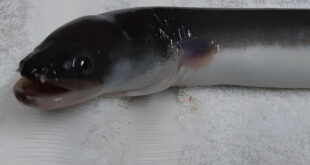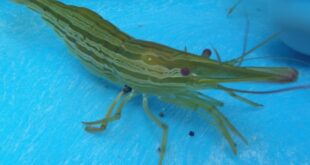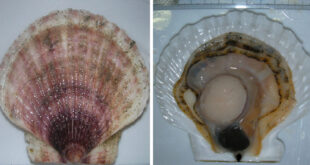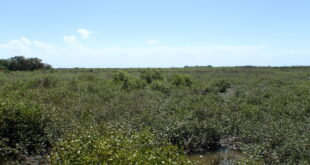By Development Communication Section

The Binangonan Freshwater Station (BFS) of SEAFDEC/AQD celebrated its 38th anniversary with the theme “Bold, Fierce but Sweet at 38” on 24 July 2014. Dr. Frolan Aya, Officer-In-Charge of BFS, welcomed all guests and participants of the Farmers’ Forum while Dr. Takuro Shibuno, Deputy Chief and Dr. Ma. Junemie Hazel Lebata-Ramos, Research Division Head, gave the anniversary messages.
Dr. Shibuno, Dr. Lebata-Ramos and Dr. Aya officiated the awarding of certificates of recognition to BFS staff who have rendered exemplary and loyal service to the research station. This was immediately followed by intermission numbers performed by the younger staff of BFS and by the members of the local government unit of Barangay Pipindan.
The Farmers’ Forum included a single lecture by Dr. Ma. Lourdes Cuvin-Aralar with her topic on “Breeding, Hatchery and Nursery of Giant Freshwater Prawn.” Dr. Cuvin-Aralar clarified that her talk is actually a general preview for the upcoming training in August to be conducted by BFS on the “Hatchery, Nursery and Grow-out of the Giant Freshwater Prawn.”
Dr. Cuvin-Aralar explained that, according to literature, there once was an endemic population of giant freshwater prawns, or “ulang” as it is locally called, in Laguna de Bay. This endemic population was wiped out due to the heavy pollution of the Pasig River which the prawns used to migrate to brackishwater to spawn and where the earlier stages of larval development take place until the larvae reach the postlarval stage.
Larval rearing in the hatchery can take 28 to 35 days wherein the larvae or zoeas are fed Artemia nauplii, egg custard and Moina sp. Feeding with Moina would have been more cost effective but their availability is seasonal. When the zoeas metamorphose into postlarvae, they can then be grown in full freshwater and fed commercial feeds at 10-20% of body weight. Fifteen-day old postlarvae or older are ready for harvest and used as seed stock for grow-out. Financial analysis of postlarval production show that each fry has a breakeven price of Php 0.45 and can be sold at a farm gate price of Php 1.00.
The Open Forum that followed was moderated by Dr. Nerissa Salayo who also gave the highlights of BFS studies. She updated the audience on Engr. Emil Aralar’s project on the verification and dissemination of “ulang” or giant freshwater prawn culture in Laguna de Bay. Due to budget constraints, the project was initially implemented in Barangay Pipindan, the local government unit where BFS is located and will later be replicated in other communities around Laguna de Bay. It is the initiative of the fisherfolk of Pipindan to be trained in the production of ulang juveniles because they are confident that the grow-out phase will not be a problem for they have been fish farmers of other freshwater species for more than three decades. They are also aware that the economic gains are initially small but can still contribute to their incomes over what they presently earn from producing and selling tilapia juveniles. Engr. Aralar confirmed that the two cooperators at Barangay Pipindan recently had a partial harvest of large blue-clawed “ulang” and that the farmer-cooperators reported high average survival rates of the prawn at 80% except in one cage that had only 58% due to holes in the net. Sadly, all the cages were damaged a week before the anniversary when Typhoon Glenda ravaged through the Laguna de Bay area.
Dr. Maria Rowena Romana-Eguia, the Head of the Manila Office, gave the closing remarks. She emphasized that BFS is trying to introduce itself to other provinces outside of the Laguna area and that these efforts to reach out to these communities are through the ABOT (Agree Build Operate Transfer) programs on the culture of freshwater species. She reminisced that Binangonan Freshwater Station used to be called Binangonan Research Station or BRS because the station also worked on marine and brackishwater species like the giant tiger prawn, milkfish and tilapia. She added that it would have been more fitting then to have a theme for BRS as “brave, resilient and strong” with an emphasis on resilient because despite the threats on the continued operation of the station in the past due to limited funds it continues to exist and to serve to this date.


 SEAFDEC/AQD Southeast Asian Fisheries Development Center | Aquaculture Department
SEAFDEC/AQD Southeast Asian Fisheries Development Center | Aquaculture Department



